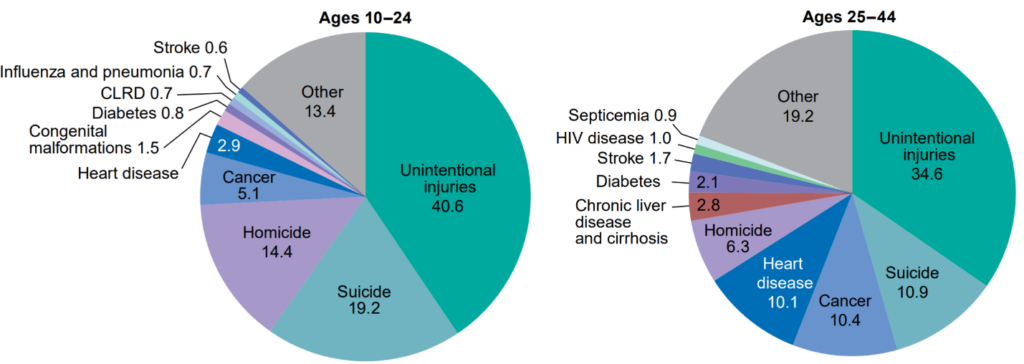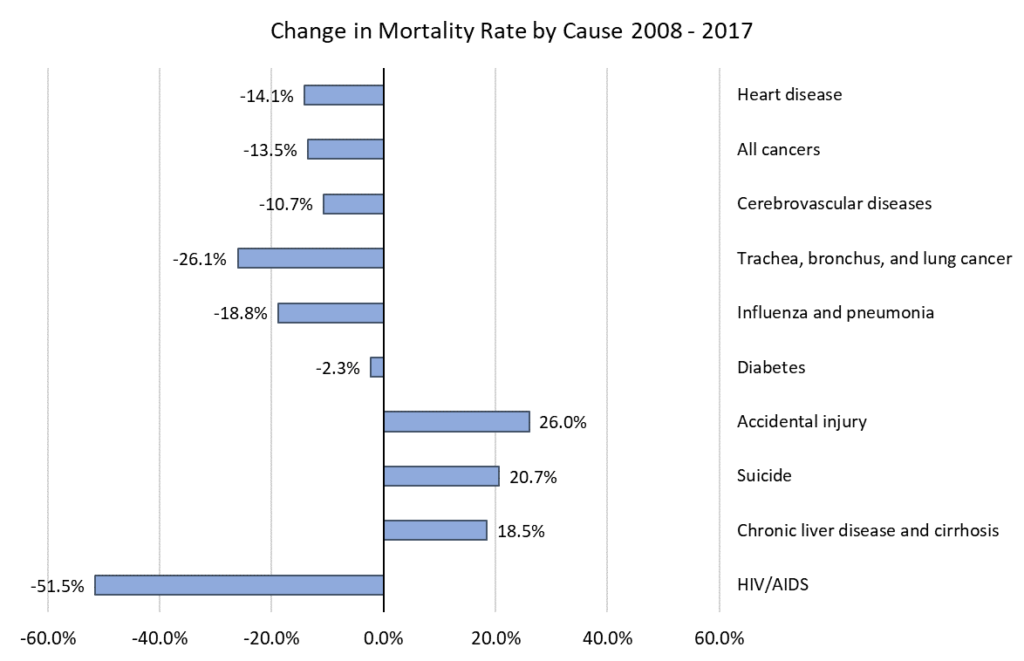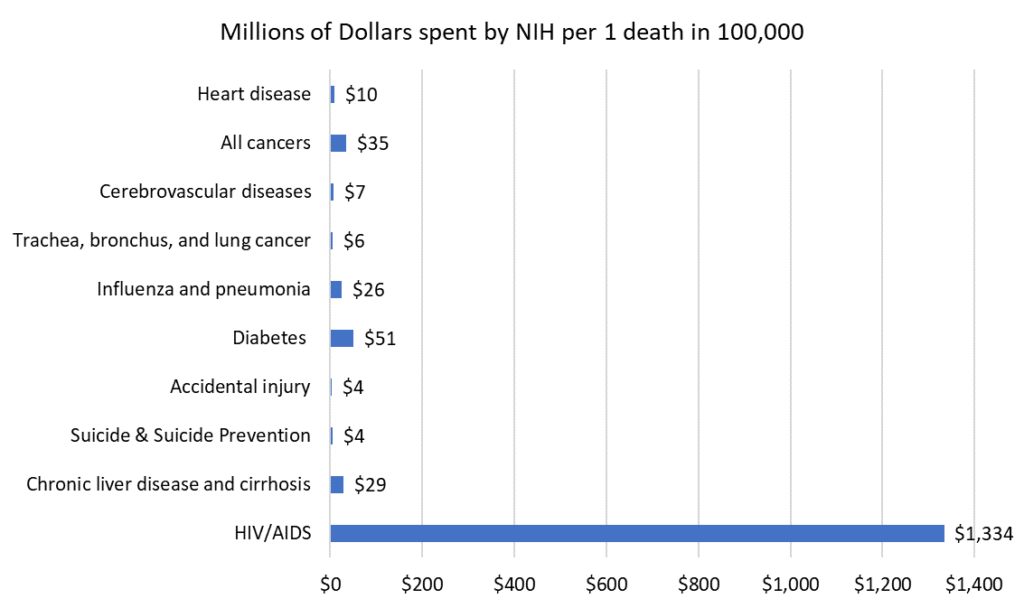Research and Statistics
Suicide, the intentional killing of one’s self, is the 10th leading cause of death in the United States. It is also the second leading cause of death for individuals ages 10 – 44:

Figure 1. Percent distribution of the 10 leading causes of death, by age group: United States, 2017.
Source: CDC National Vital Statistics Report, June 2019.
In 2018, 48,344 Americans died by suicide (132 every day), and there were an estimated 1.4 million suicide attempts – roughly 25 attempts per completed suicide. 10.3% of Americans have thought about suicide. Despite prevention efforts, the number of suicide deaths per 100,000 people has increased from 10.5 in 1999 to 14.2 in 2018. Annual number of deaths by suicide has increased 60% in a 20-year span.

Figure 2. Increase in Suicide Mortality in the United States, 1999-2018.
Source: NCHS Data Brief, April 2020.
Suicide continues to take more and more lives each year. These two graphs compare the change in mortality rate by cause from 2008 to 2017, as well as the research dollars spent by the National Institutes of Health for that same time period.

Figure 3. Age-adjusted death rates per 100,000 people for prevalent causes of death, United States 2008 – 2017.
Source: CDC Data Finder, https://www.cdc.gov/nchs/hus/contents2018.htm?search=Deaths.

Figure 4. Total NIH funding by cause divided by 10-year mortality rate, United States 2008 – 2017.
Source: CDC Data Finder, NIH Estimates of Funding for Various Research, Condition, and Disease Categories, February 2020.
Suicide and other Issues
Co-Occurring Mental Health Disorders
Suicidal thoughts affect one’s emotional and psychological well-being in a myriad of ways. Individuals with mental health conditions frequently attempt to self-medicate with alcohol or drugs, as they can provide temporary relief of emotional pain. In the long run though it can make matters worse. Studies on suicide reveal a strong correlation between suicide and substance abuse; Individuals who abuse substances are 10 to 14 times more likely to contemplate, attempt, or complete suicide.
The World Health Organization estimates that mental health conditions are associated with more than 90% of suicide cases. Mental health and substance abuse are major drivers.
Risk Factors: Note the overlap with systemic and social justice issues.
- Social isolation (perhaps the strongest predictor)
- Mental health disorders: clinical depression, anxiety, bipolar, schizophrenia, substance use disorders, compulsive disorders, eating disorders, trauma disorders
- Physical illness
- Unemployment
- Homelessness
- Minority stress (injustices, racism, low socio-economic status)
- Veteran status
- Adverse life events
- Access to firearms (accounts for more than half of all completed suicides)
- Family conflict, trauma from relationships, trauma from childhood
- Low self-esteem
- Feelings of hopelessness
- Feeling like you don’t belong
- Feeling that you are a burden on others
- Unshakeable guilt or shame
- Genetics and family history
- Grief and loss
- Brain-chemical imbalances due to medication
- Previous suicide attempts (reduced fear of death, increased pain tolerance, increased ability to self-harm with repeated attempts)
Contagion: Studies show that suicide rates increase when high profile suicides occur (such as celebrities or others prevalent in media coverage).
Impacts
- Suicide prevention organizations estimate that about 7 million people are directly impacted by a suicide (family members and closer friends); the number of those in a person’s wider social network are exponentially higher (about 54% of Americans).
- The cost of suicide was $69 billion in combined work loss and medical cost in 2015. Investments in additional counseling and medical services would provide a 6-to-1 benefit to cost ratio.
